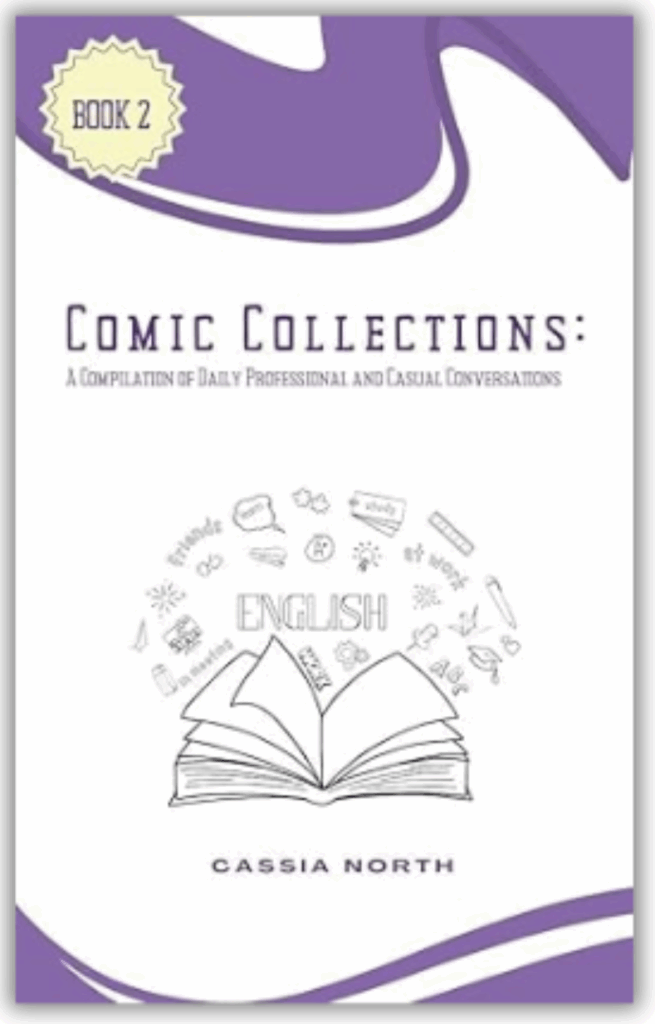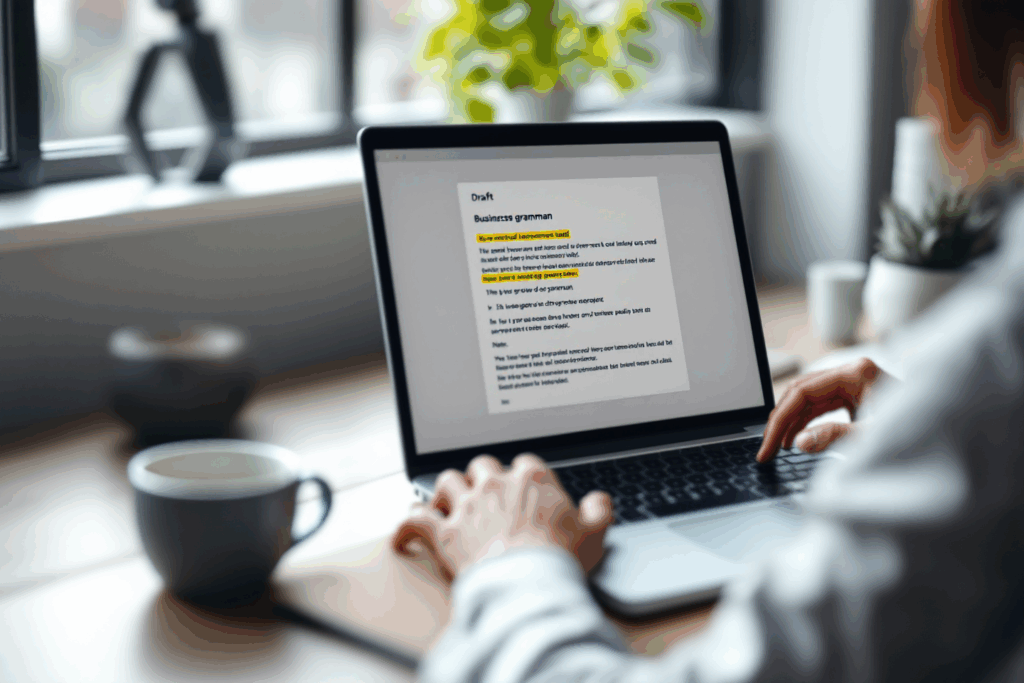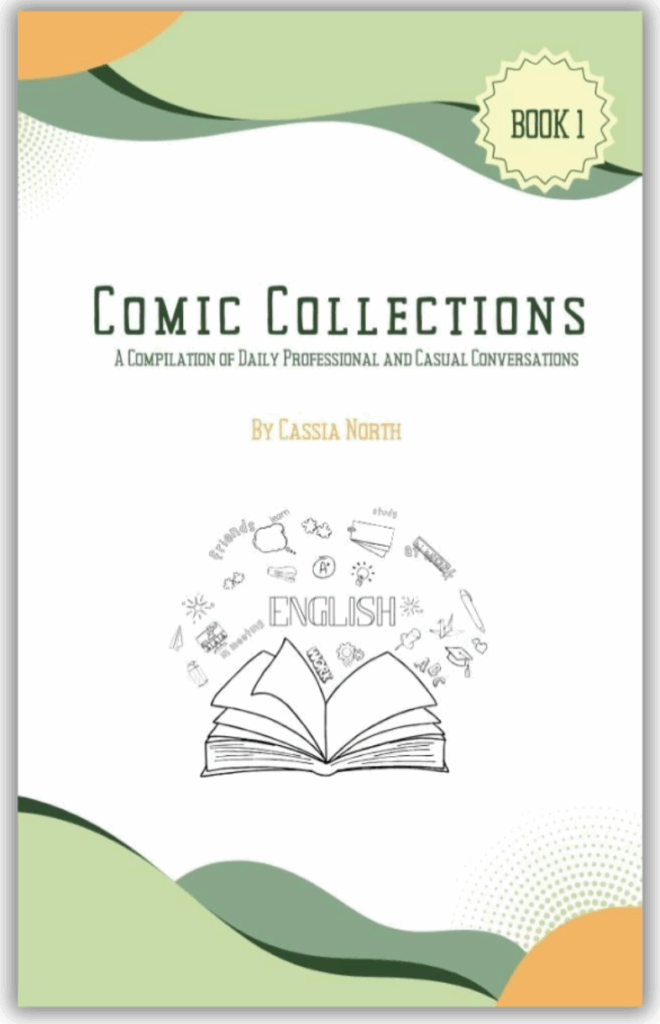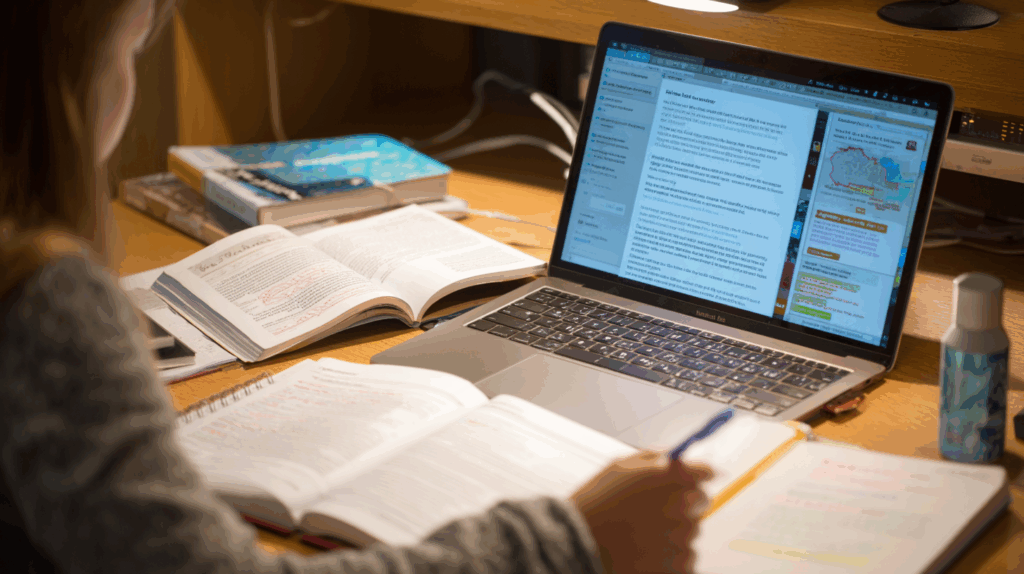
English Blogs
"Let's Learn, Explore, and Connect to the World"

Future (Be going to) 2
- Tokita Akira
- Basic English Grammar Blog

II. Understanding 'Be Going To'
The ‘be going to’ construction in English is a versatile and widely used form to express future intentions and plans. Understanding its formation, usage, and distinction from other future tenses is crucial for effective communication in English.
Formation of ‘Be Going To’
The formation of the ‘be going to’ construction involves a present tense form of the verb ‘to be’ (am, is, are), followed by ‘going to’ and the base form of the main verb. This structure is pivotal in indicating a plan or decision regarding the future.
Examples:

I am going to start a new hobby.

She is going to travel to Italy next summer.

They are going to renovate their house.
Basic Rules and Structure
In this construction, the verb ‘to be’ changes according to the subject, while ‘going to‘ and the base verb remain constant. This consistency makes ‘be going to’ a relatively straightforward structure to learn and use.
Examples:

We are going to watch a movie tonight.

He is going to apply for a new job.

You are going to love this restaurant.
Distinction from Other Future Forms
Understanding the distinction between ‘be going to’ and other future forms, such as the simple future tense (will/won’t), is essential:
Planned Actions vs. Spontaneous Decisions: ‘Be going to’ is typically used for actions that are planned or decided upon before the moment of speaking. In contrast, the simple future tense using ‘will’ is often used for spontaneous decisions made at the moment of speaking.
Predictions Based on Evidence vs. General Predictions: ‘Be going to’ is also used for predictions when there is present evidence or signs pointing to a future event. The simple future tense (will), however, is used for predictions based more on opinion or without specific evidence.
Examples:

It’s going to rain (dark clouds are visible).

It will probably rain tomorrow (general prediction).
Nuances in Usage
The ‘be going to’ construction is not only about grammar but also about the speaker’s perspective and context. It’s used when the speaker feels a certain degree of control or certainty about the future action, or when there are clear indications that the action will take place.
Conclusion
 The ‘be going to’ construction is a fundamental part of expressing future plans and intentions in English. Its proper use reflects not only a grasp of English grammar but also an understanding of the nuances in conveying future actions. In the next sections, we will delve deeper into its specific uses, how to form questions and negatives, and practical tips for its usage.
The ‘be going to’ construction is a fundamental part of expressing future plans and intentions in English. Its proper use reflects not only a grasp of English grammar but also an understanding of the nuances in conveying future actions. In the next sections, we will delve deeper into its specific uses, how to form questions and negatives, and practical tips for its usage.
Latest Blogs

Present Simple Tense 1
English Blogs “Let’s Learn, Explore, and Connect to the World” Present Simple Tense 1 I. Introduction to the Present Simple Tense in English Mastering the

Present Simple Tense 2
English Blogs “Let’s Learn, Explore, and Connect to the World” Present Simple Tense 2 II. Understanding the Present Simple Tense Definition and Structure At its
Reading comprehension quiz
Check out our books and more!

Travel English: A Compilation of Key English Conversations When Traveling
Explore the world confidently with ‘Travel English’ by Allison Kate, a comic-style guide full of essential conversations and tips for every traveler. Speak English with ease in airports, hotels, and more!
Check out our Blogs!
Read our everyday blogs and gain new knowledge, skills, and inspiration to support your learning journey here in SEKAEL.


Learn through Common English Errors Blogs by recognizing and correcting everyday grammar and usage mistakes.







 The mastery of various tenses in English plays a crucial role in effectively communicating time-related concepts, and among these, the ‘be going to’ construction is particularly significant for expressing future intentions and plans. This form is instrumental in everyday conversation, offering a way to talk about future events with a sense of immediacy and certainty. Its usage transcends various forms of communication, from casual discussions to more formal planning and forecasting.
The mastery of various tenses in English plays a crucial role in effectively communicating time-related concepts, and among these, the ‘be going to’ construction is particularly significant for expressing future intentions and plans. This form is instrumental in everyday conversation, offering a way to talk about future events with a sense of immediacy and certainty. Its usage transcends various forms of communication, from casual discussions to more formal planning and forecasting. The ‘be going to’ construction is not just a grammatical form; it is a bridge that connects present intentions to future actions. Unlike other future forms, which might convey simple predictions or scheduled events, ‘be going to’ is intimately tied to the speaker’s present intentions or the visible evidence suggesting a future outcome. This tense is deeply rooted in the present moment, reflecting decisions that, while not yet realized, are firmly set in the speaker’s mind.
The ‘be going to’ construction is not just a grammatical form; it is a bridge that connects present intentions to future actions. Unlike other future forms, which might convey simple predictions or scheduled events, ‘be going to’ is intimately tied to the speaker’s present intentions or the visible evidence suggesting a future outcome. This tense is deeply rooted in the present moment, reflecting decisions that, while not yet realized, are firmly set in the speaker’s mind. One of the unique aspects of ‘be going to’ is its distinction from other future forms like the simple future tense using ‘will’. While ‘will’ might denote a future action in a broader sense, ‘be going to’ often implies a plan or decision that has already been made. For instance, ‘I will travel to Paris’ might simply suggest a future action, but ‘I am going to travel to Paris’ implies a plan already in motion, perhaps with tickets booked or itineraries planned.
One of the unique aspects of ‘be going to’ is its distinction from other future forms like the simple future tense using ‘will’. While ‘will’ might denote a future action in a broader sense, ‘be going to’ often implies a plan or decision that has already been made. For instance, ‘I will travel to Paris’ might simply suggest a future action, but ‘I am going to travel to Paris’ implies a plan already in motion, perhaps with tickets booked or itineraries planned. The ‘be going to’ form is ubiquitous in everyday English. It appears in conversations about weekend plans, discussions about career aspirations, and even when making predictions based on current observations. Its prevalence makes it a vital component of English proficiency, not just for its grammatical correctness but for its role in accurately conveying future intentions.
The ‘be going to’ form is ubiquitous in everyday English. It appears in conversations about weekend plans, discussions about career aspirations, and even when making predictions based on current observations. Its prevalence makes it a vital component of English proficiency, not just for its grammatical correctness but for its role in accurately conveying future intentions. For learners of English, particularly for those whose native languages may not differentiate between future tenses as distinctly, mastering the ‘be going to’ construction is a significant milestone. It represents not just an understanding of English grammar but an ability to convey subtleties of intention and planning – a marker of fluency and comfort with the language.
For learners of English, particularly for those whose native languages may not differentiate between future tenses as distinctly, mastering the ‘be going to’ construction is a significant milestone. It represents not just an understanding of English grammar but an ability to convey subtleties of intention and planning – a marker of fluency and comfort with the language. The ‘be going to’ future tense is more than a grammatical rule; it is a key to effective communication about the future. It reflects a blend of present intentions and future actions, providing clarity and specificity in discussing what lies ahead. As we delve deeper into understanding, using, and mastering this essential tense, we’ll explore its formation, uses, and nuances, ensuring a comprehensive grasp of this vital aspect of English communication.
The ‘be going to’ future tense is more than a grammatical rule; it is a key to effective communication about the future. It reflects a blend of present intentions and future actions, providing clarity and specificity in discussing what lies ahead. As we delve deeper into understanding, using, and mastering this essential tense, we’ll explore its formation, uses, and nuances, ensuring a comprehensive grasp of this vital aspect of English communication.






 Future Plans Discussion: Engage in conversations or writing exercises where you discuss your future plans. This can involve talking about what you will do over the weekend, your career aspirations, or upcoming vacations.
Future Plans Discussion: Engage in conversations or writing exercises where you discuss your future plans. This can involve talking about what you will do over the weekend, your career aspirations, or upcoming vacations. Predicting Future Trends: Practice making predictions about future trends in areas like technology, fashion, or politics. This helps in using the future simple tense in a predictive context.
Predicting Future Trends: Practice making predictions about future trends in areas like technology, fashion, or politics. This helps in using the future simple tense in a predictive context. Role-playing Games: Participate in role-playing exercises that involve making spontaneous decisions or promises. For example, simulate a scenario where you have to make a quick decision about a hypothetical situation.
Role-playing Games: Participate in role-playing exercises that involve making spontaneous decisions or promises. For example, simulate a scenario where you have to make a quick decision about a hypothetical situation. Journaling: Keep a journal where you write about your plans and predictions for the future using the future simple tense.
Journaling: Keep a journal where you write about your plans and predictions for the future using the future simple tense. Creative Writing: Try writing short stories or scenarios set in the future, focusing on using the future simple tense to describe actions and events.
Creative Writing: Try writing short stories or scenarios set in the future, focusing on using the future simple tense to describe actions and events. Expanding your practice of the future simple tense through diverse exercises and real-life application is key to achieving proficiency. These activities not only reinforce your understanding but also enhance your ability to use the tense naturally in conversation and writing.
Expanding your practice of the future simple tense through diverse exercises and real-life application is key to achieving proficiency. These activities not only reinforce your understanding but also enhance your ability to use the tense naturally in conversation and writing.


 Spontaneous Decisions: Use the future simple tense for decisions made at the moment of speaking, rather than pre-planned actions.
Spontaneous Decisions: Use the future simple tense for decisions made at the moment of speaking, rather than pre-planned actions. Predictions Without Evidence: When making predictions based on personal opinion or without concrete evidence, the future simple is the appropriate choice.
Predictions Without Evidence: When making predictions based on personal opinion or without concrete evidence, the future simple is the appropriate choice. Promises, Offers, and Threats: The future simple is often used for making promises, offers, or threats. It’s a way to express willingness to do something in the future.
Promises, Offers, and Threats: The future simple is often used for making promises, offers, or threats. It’s a way to express willingness to do something in the future. Choosing the Right Future Form: Be cautious not to overuse ‘will’ for all future references. Other forms like ‘going to’ or the present continuous might be more appropriate in certain contexts, such as planned actions or events.
Choosing the Right Future Form: Be cautious not to overuse ‘will’ for all future references. Other forms like ‘going to’ or the present continuous might be more appropriate in certain contexts, such as planned actions or events.
 While the formation of the future simple tense itself is straightforward, be aware of the base forms of irregular verbs to avoid mistakes in verb usage.
While the formation of the future simple tense itself is straightforward, be aware of the base forms of irregular verbs to avoid mistakes in verb usage. The future simple tense is a key element of English grammar, essential for discussing future plans and predictions. Understanding its proper use and being aware of common mistakes can significantly enhance your ability to express future ideas and actions. Regular practice and attentiveness to these guidelines will improve your proficiency in using the future simple tense.
The future simple tense is a key element of English grammar, essential for discussing future plans and predictions. Understanding its proper use and being aware of common mistakes can significantly enhance your ability to express future ideas and actions. Regular practice and attentiveness to these guidelines will improve your proficiency in using the future simple tense.










 Mastering question and negative forms in the future simple tense is essential for expressing uncertainty, making inquiries, or denying future actions or events in English. Understanding these structures will enhance your ability to discuss future scenarios with greater clarity and precision.
Mastering question and negative forms in the future simple tense is essential for expressing uncertainty, making inquiries, or denying future actions or events in English. Understanding these structures will enhance your ability to discuss future scenarios with greater clarity and precision.

 In an era where digital content is king, the art of video editing has transcended its traditional boundaries, evolving into a skill that’s not just for professionals, but for everyone. Imagine turning raw footage from a family holiday, a friend’s wedding, or even a casual day out into a story that captivates and entertains. This is the power of video editing – a power that is now at your fingertips.
In an era where digital content is king, the art of video editing has transcended its traditional boundaries, evolving into a skill that’s not just for professionals, but for everyone. Imagine turning raw footage from a family holiday, a friend’s wedding, or even a casual day out into a story that captivates and entertains. This is the power of video editing – a power that is now at your fingertips. In this guide, we’ll explore how basic video editing skills can benefit various aspects of your daily life. From personal projects to professional pursuits, we’ll show you why this skill is becoming increasingly essential in our visually driven world.
In this guide, we’ll explore how basic video editing skills can benefit various aspects of your daily life. From personal projects to professional pursuits, we’ll show you why this skill is becoming increasingly essential in our visually driven world. 1. Personal Life Enrichment: Video editing allows you to transform ordinary footage into extraordinary stories. Whether it’s a birthday celebration, a family trip, or your child’s first steps, editing helps you create more than just a video; you create a memorable narrative that captures the essence of those moments.
1. Personal Life Enrichment: Video editing allows you to transform ordinary footage into extraordinary stories. Whether it’s a birthday celebration, a family trip, or your child’s first steps, editing helps you create more than just a video; you create a memorable narrative that captures the essence of those moments. 2. Enhancing Social Media Presence: In the age of social media, video content stands out. Editing your videos, even minimally, can dramatically improve their appeal, making your social media posts more engaging and shareable.
2. Enhancing Social Media Presence: In the age of social media, video content stands out. Editing your videos, even minimally, can dramatically improve their appeal, making your social media posts more engaging and shareable. 3. Professional Edge in Presentations:
3. Professional Edge in Presentations: 4. Creative Outlet for Hobbyists:
4. Creative Outlet for Hobbyists: 5. Community Engagement: Video editing skills can help you contribute to community events or causes. Creating videos for local events, fundraisers, or awareness campaigns can be a rewarding way to use your skills for a good cause.
5. Community Engagement: Video editing skills can help you contribute to community events or causes. Creating videos for local events, fundraisers, or awareness campaigns can be a rewarding way to use your skills for a good cause. 6. Educational Tool: For students or educators, video editing can transform the learning experience. Educational videos, when well-edited, can make complex subjects more accessible and enjoyable.
6. Educational Tool: For students or educators, video editing can transform the learning experience. Educational videos, when well-edited, can make complex subjects more accessible and enjoyable. Capturing Life’s Moments: Turn clips from family gatherings, vacations, or everyday life into beautiful narratives. By editing these videos, you create lasting memories, giving life to those fleeting moments in a more dynamic and engaging way.
Capturing Life’s Moments: Turn clips from family gatherings, vacations, or everyday life into beautiful narratives. By editing these videos, you create lasting memories, giving life to those fleeting moments in a more dynamic and engaging way. Vlogging and Personal Branding:
Vlogging and Personal Branding: Travel Videos:
Travel Videos: Special Occasions:
Special Occasions: Hobby Documentation:
Hobby Documentation:  Learning and Skill Development:
Learning and Skill Development:






 Community Events and Activities:
Community Events and Activities: Social Causes and Awareness:
Social Causes and Awareness: Collaborative Projects:
Collaborative Projects: Educational Workshops and Training:
Educational Workshops and Training: Cultural Exchange and Storytelling:
Cultural Exchange and Storytelling:  Networking and Professional Growth:
Networking and Professional Growth: Cultivating Creativity:
Cultivating Creativity:  Technical Skill Development:
Technical Skill Development:  Patience and Attention to Detail:
Patience and Attention to Detail: Self-Expression and Storytelling:
Self-Expression and Storytelling:  Lifelong Learning:
Lifelong Learning: Community and Networking:
Community and Networking: Career Advancement:
Career Advancement:
 We encourage you to take the first step on this exciting journey. Embrace the learning process, experiment with your creativity, and watch as your world expands through the lens of video editing. The stories you can tell and the impact you can make are limited only by your imagination. So, dive in, start editing, and see where your creativity takes you.
We encourage you to take the first step on this exciting journey. Embrace the learning process, experiment with your creativity, and watch as your world expands through the lens of video editing. The stories you can tell and the impact you can make are limited only by your imagination. So, dive in, start editing, and see where your creativity takes you.












 The future simple tense is a vital tool in English communication, used for expressing future plans, making predictions, offering promises, and formulating assumptions. Its ability to clearly communicate intentions and expectations about the future makes it an indispensable part of the language. With practice, using the future simple tense becomes intuitive, allowing for effective and meaningful discussions about future events.
The future simple tense is a vital tool in English communication, used for expressing future plans, making predictions, offering promises, and formulating assumptions. Its ability to clearly communicate intentions and expectations about the future makes it an indispensable part of the language. With practice, using the future simple tense becomes intuitive, allowing for effective and meaningful discussions about future events.












 Understanding the formation and basic structure of the future simple tense is crucial for discussing future plans and predictions. Its straightforward construction makes it a user-friendly tense for English learners. In the following sections, we will delve deeper into the various uses of the future simple tense, offering practical examples and tips to enhance your understanding and usage.
Understanding the formation and basic structure of the future simple tense is crucial for discussing future plans and predictions. Its straightforward construction makes it a user-friendly tense for English learners. In the following sections, we will delve deeper into the various uses of the future simple tense, offering practical examples and tips to enhance your understanding and usage.

 The future simple tense, often formed with the auxiliary ‘will’, is a fundamental aspect of English grammar, pivotal for discussing future events, intentions, and predictions. Its mastery is crucial for anyone learning English, enabling clear and effective communication about what is yet to come. This tense allows speakers to convey plans, make predictions, and express promises or decisions made at the moment of speaking.
The future simple tense, often formed with the auxiliary ‘will’, is a fundamental aspect of English grammar, pivotal for discussing future events, intentions, and predictions. Its mastery is crucial for anyone learning English, enabling clear and effective communication about what is yet to come. This tense allows speakers to convey plans, make predictions, and express promises or decisions made at the moment of speaking. Understanding the future simple tense is essential for navigating daily conversations, professional communications, and even creative writing. It provides a framework for talking about the future, offering a way to articulate hopes, expectations, and plans. This tense is especially important in English because it helps to distinguish between different types of future occurrences, each with its nuances and implications.
Understanding the future simple tense is essential for navigating daily conversations, professional communications, and even creative writing. It provides a framework for talking about the future, offering a way to articulate hopes, expectations, and plans. This tense is especially important in English because it helps to distinguish between different types of future occurrences, each with its nuances and implications. For learners, particularly those from linguistic backgrounds with different methods of expressing future actions, mastering the future simple tense can be both challenging and rewarding. The key to its proper use lies in understanding not only its structure – ‘will’ followed by the base form of the verb – but also the contexts in which it is most appropriately used. Whether planning for upcoming events, making predictions, or making spontaneous decisions, the future simple tense is an indispensable tool.
For learners, particularly those from linguistic backgrounds with different methods of expressing future actions, mastering the future simple tense can be both challenging and rewarding. The key to its proper use lies in understanding not only its structure – ‘will’ followed by the base form of the verb – but also the contexts in which it is most appropriately used. Whether planning for upcoming events, making predictions, or making spontaneous decisions, the future simple tense is an indispensable tool. In this article, we will explore the nuances of the future simple tense, including its formation, common uses, and the distinctions in forming questions and negatives. We aim to provide a comprehensive guide that simplifies this aspect of English grammar, enriched with practical examples and tips, enabling learners to confidently and accurately use the future simple tense. By the end of this piece, readers will have gained a deeper understanding and improved ability to discuss future events, an essential skill in the journey towards English fluency.
In this article, we will explore the nuances of the future simple tense, including its formation, common uses, and the distinctions in forming questions and negatives. We aim to provide a comprehensive guide that simplifies this aspect of English grammar, enriched with practical examples and tips, enabling learners to confidently and accurately use the future simple tense. By the end of this piece, readers will have gained a deeper understanding and improved ability to discuss future events, an essential skill in the journey towards English fluency.

 Narrating Past Events: Practice recounting events from your past, such as a memorable trip or a significant life event. This exercise helps in applying the past simple tense to real-life situations.
Narrating Past Events: Practice recounting events from your past, such as a memorable trip or a significant life event. This exercise helps in applying the past simple tense to real-life situations. Reading and Analyzing: Read short stories or historical accounts, and identify the verbs in the past simple tense. Analyze how they are used to describe actions and events.
Reading and Analyzing: Read short stories or historical accounts, and identify the verbs in the past simple tense. Analyze how they are used to describe actions and events. Writing Exercises: Write about your typical day, but in the past tense. This can help you practice converting present actions into their past form, enhancing your understanding of the tense.
Writing Exercises: Write about your typical day, but in the past tense. This can help you practice converting present actions into their past form, enhancing your understanding of the tense. Journaling: Keep a journal where you write about your daily activities, but in the past tense. This practice helps in reinforcing the use of the tense in describing everyday events.
Journaling: Keep a journal where you write about your daily activities, but in the past tense. This practice helps in reinforcing the use of the tense in describing everyday events. Movie and Book Reviews: After watching a movie or reading a book, write a review in the past tense. Focus on describing the plot and characters using the past simple tense.
Movie and Book Reviews: After watching a movie or reading a book, write a review in the past tense. Focus on describing the plot and characters using the past simple tense. Expanding your practice of the past simple tense through diverse exercises, utilizing resources, and applying it in real-life contexts is key to achieving proficiency. These activities not only reinforce your understanding but also enhance your ability to use the tense naturally in conversation and writing.
Expanding your practice of the past simple tense through diverse exercises, utilizing resources, and applying it in real-life contexts is key to achieving proficiency. These activities not only reinforce your understanding but also enhance your ability to use the tense naturally in conversation and writing.